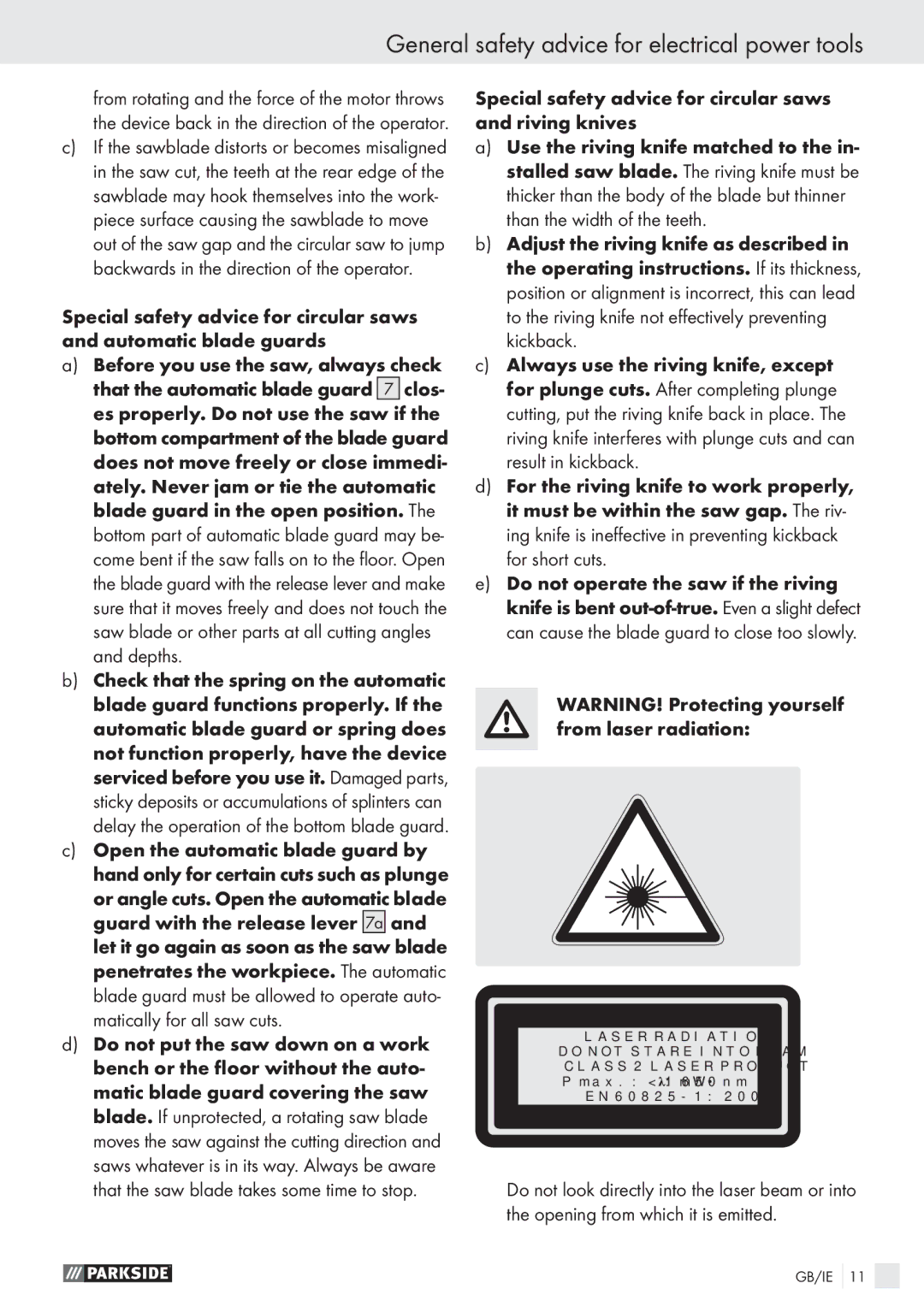
General safety advice for electrical power tools
from rotating and the force of the motor throws the device back in the direction of the operator.
c)If the sawblade distorts or becomes misaligned in the saw cut, the teeth at the rear edge of the sawblade may hook themselves into the work- piece surface causing the sawblade to move out of the saw gap and the circular saw to jump backwards in the direction of the operator.
Special safety advice for circular saws and automatic blade guards
a)Before you use the saw, always check that the automatic blade guard 7 clos- es properly. Do not use the saw if the bottom compartment of the blade guard does not move freely or close immedi- ately. Never jam or tie the automatic blade guard in the open position. The bottom part of automatic blade guard may be- come bent if the saw falls on to the floor. Open the blade guard with the release lever and make sure that it moves freely and does not touch the saw blade or other parts at all cutting angles and depths.
b)Check that the spring on the automatic blade guard functions properly. If the automatic blade guard or spring does not function properly, have the device serviced before you use it. Damaged parts, sticky deposits or accumulations of splinters can delay the operation of the bottom blade guard.
c)Open the automatic blade guard by hand only for certain cuts such as plunge or angle cuts. Open the automatic blade guard with the release lever 7a and let it go again as soon as the saw blade penetrates the workpiece. The automatic blade guard must be allowed to operate auto- matically for all saw cuts.
d)Do not put the saw down on a work bench or the floor without the auto- matic blade guard covering the saw blade. If unprotected, a rotating saw blade moves the saw against the cutting direction and saws whatever is in its way. Always be aware that the saw blade takes some time to stop.
Special safety advice for circular saws and riving knives
a)Use the riving knife matched to the in- stalled saw blade. The riving knife must be thicker than the body of the blade but thinner than the width of the teeth.
b)Adjust the riving knife as described in the operating instructions. If its thickness, position or alignment is incorrect, this can lead to the riving knife not effectively preventing kickback.
c)Always use the riving knife, except for plunge cuts. After completing plunge cutting, put the riving knife back in place. The riving knife interferes with plunge cuts and can result in kickback.
d)For the riving knife to work properly, it must be within the saw gap. The riv- ing knife is ineffective in preventing kickback for short cuts.
e)Do not operate the saw if the riving knife is bent
WARNING! Protecting yourself from laser radiation:
LASER RADIATION
DO NOT STARE INTO BEAM
CLASS 2 LASER PRODUCT
Pmax.: < 1 mW · ![]() : 650 nm EN
: 650 nm EN
Do not look directly into the laser beam or into the opening from which it is emitted.
